Have you ever looked up and caught your breath at the sight of a flock of geese slicing through the sky in a perfect V? It’s one of nature’s most captivating sights—majestic, mysterious, and oddly mathematical. This isn’t just a beautiful accident. The V-formation is a marvel of natural engineering, honed by evolution and shaped by survival. It’s so efficient, so clever, that humans borrowed its secrets to design better airplanes and improve flight efficiency. But how does this pattern work? Why is it so effective? And just how far have humans taken inspiration from these airborne architects? Let’s embark on a journey from wild blue yonder to cutting-edge science, unraveling the spellbinding story of V-formation flying.
The Power of the V: Nature’s Aerodynamic Blueprint
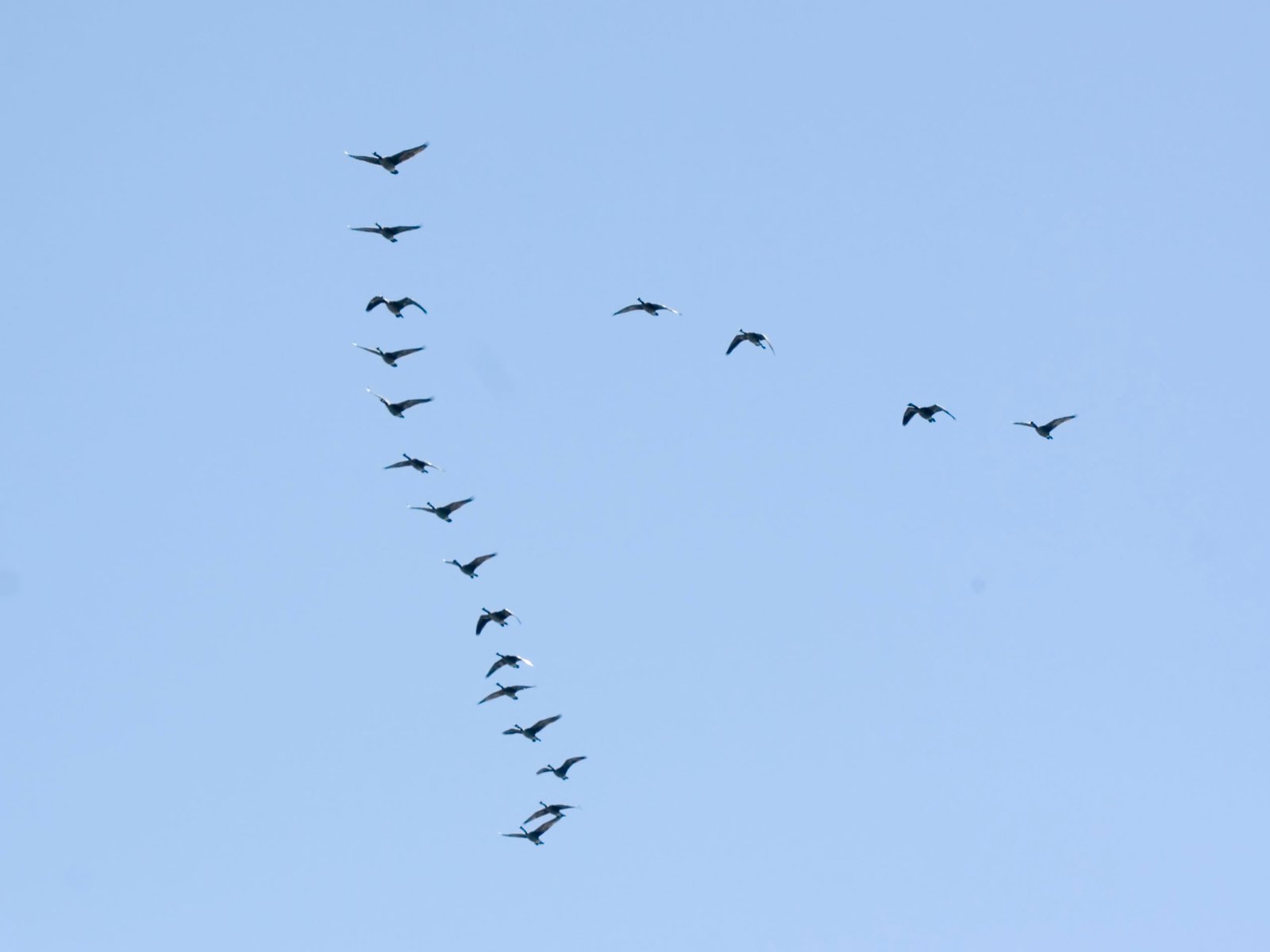
Watching birds in V-formation is like witnessing a living equation in motion. Each bird positions itself just right to catch the upwash from the wingtips of the bird ahead, a region where air is pushed upward, reducing drag and making flight easier. This isn’t just luck; it’s a finely tuned strategy evolved over millions of years. Imagine a relay race where each runner gets a gust of wind at their back—except here, they’re all running together, making the whole group faster and less tired. Scientists have measured that geese in formation can travel up to 70% farther than if they flew alone, a staggering testament to natural engineering.
The Science of Upwash and Downwash
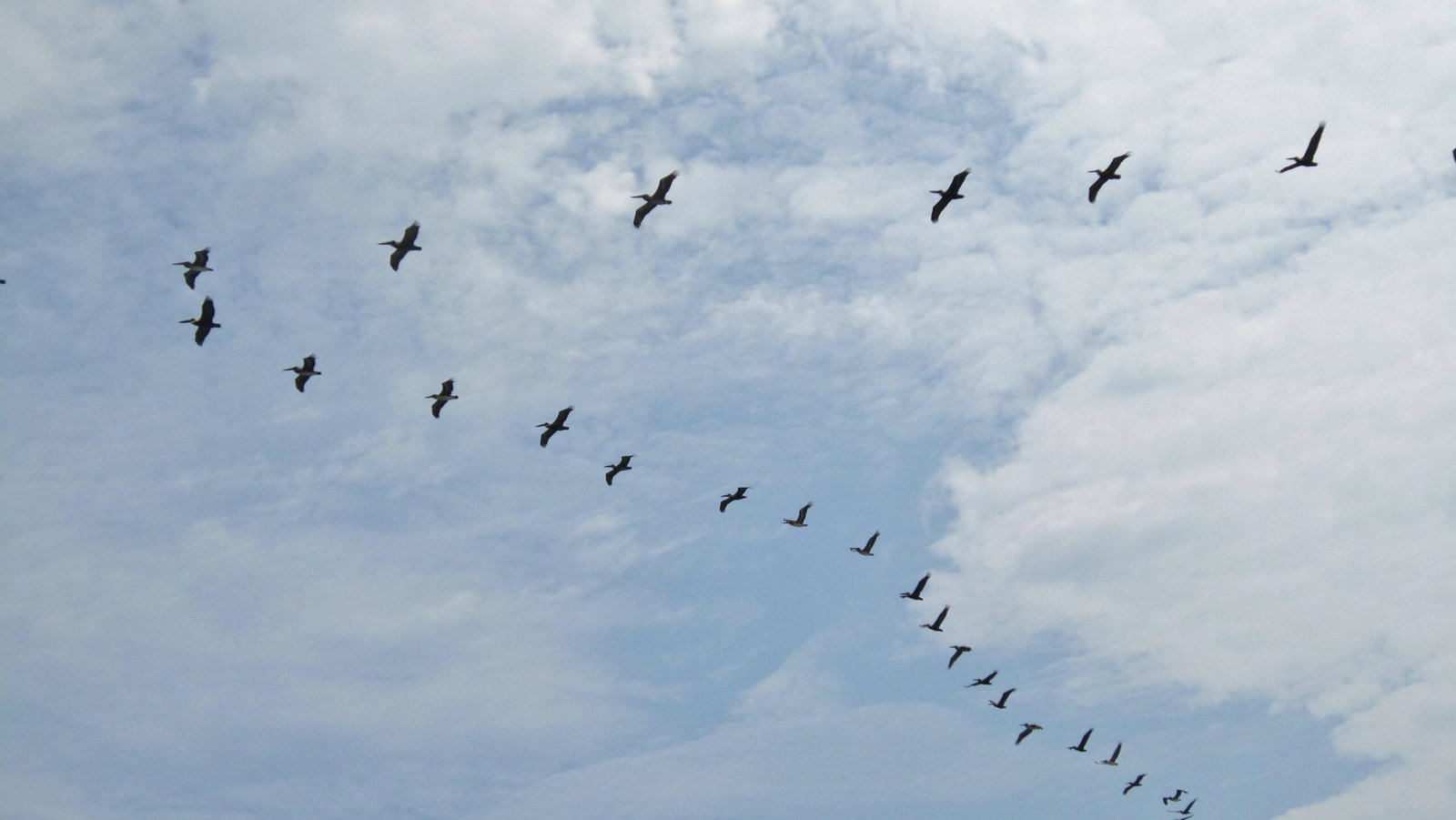
The secret of the V-formation boils down to two critical concepts: upwash and downwash. When a bird flaps its wings, it produces swirling air currents. Directly behind the wing, there’s downwash, where the air is pushed down, but just off to the side, there’s upwash, a pocket of rising air. Birds in a V-formation position themselves so their wings ride this upwash, which gives them a free lift. This alignment requires precise spacing and timing—just a wing’s breadth apart. For the lead bird, it’s the toughest job, but when it tires, it drops back, and another takes its place. It’s teamwork in its purest form.
Energy Savings and Teamwork in Flight
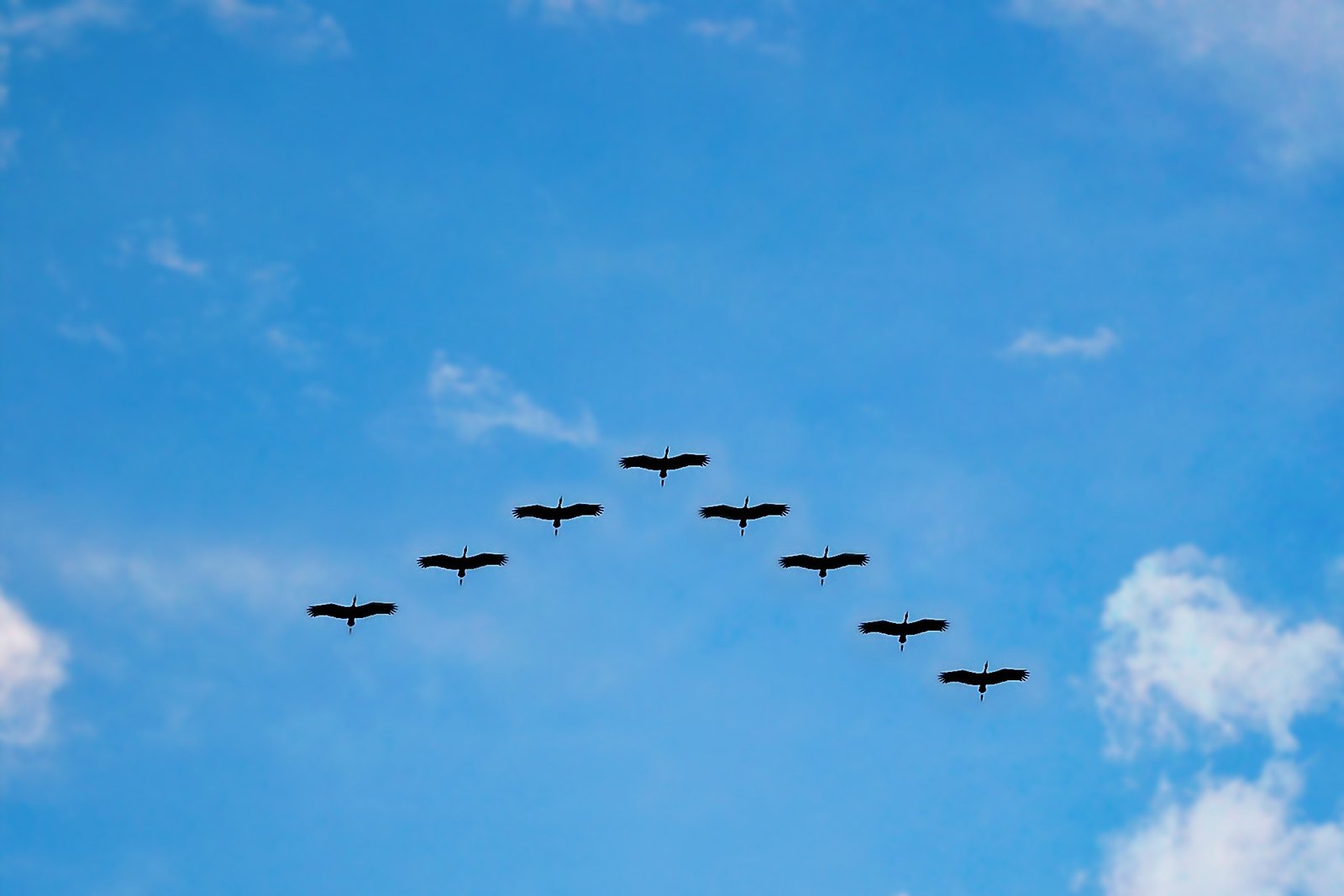
One of the most inspiring aspects of V-formation flying is the way it embodies teamwork. Birds aren’t just saving their own energy—they’re helping the whole flock. Studies with heart rate monitors on migrating geese show that birds at the back of the V work significantly less hard than those at the front. The flock rotates leaders to share the burden, a bit like cyclists drafting in a peloton. This strategy allows the group to travel much farther than if each bird went solo. It’s a lesson in cooperation that has fascinated engineers, biologists, and even philosophers.
Birds That Master the V
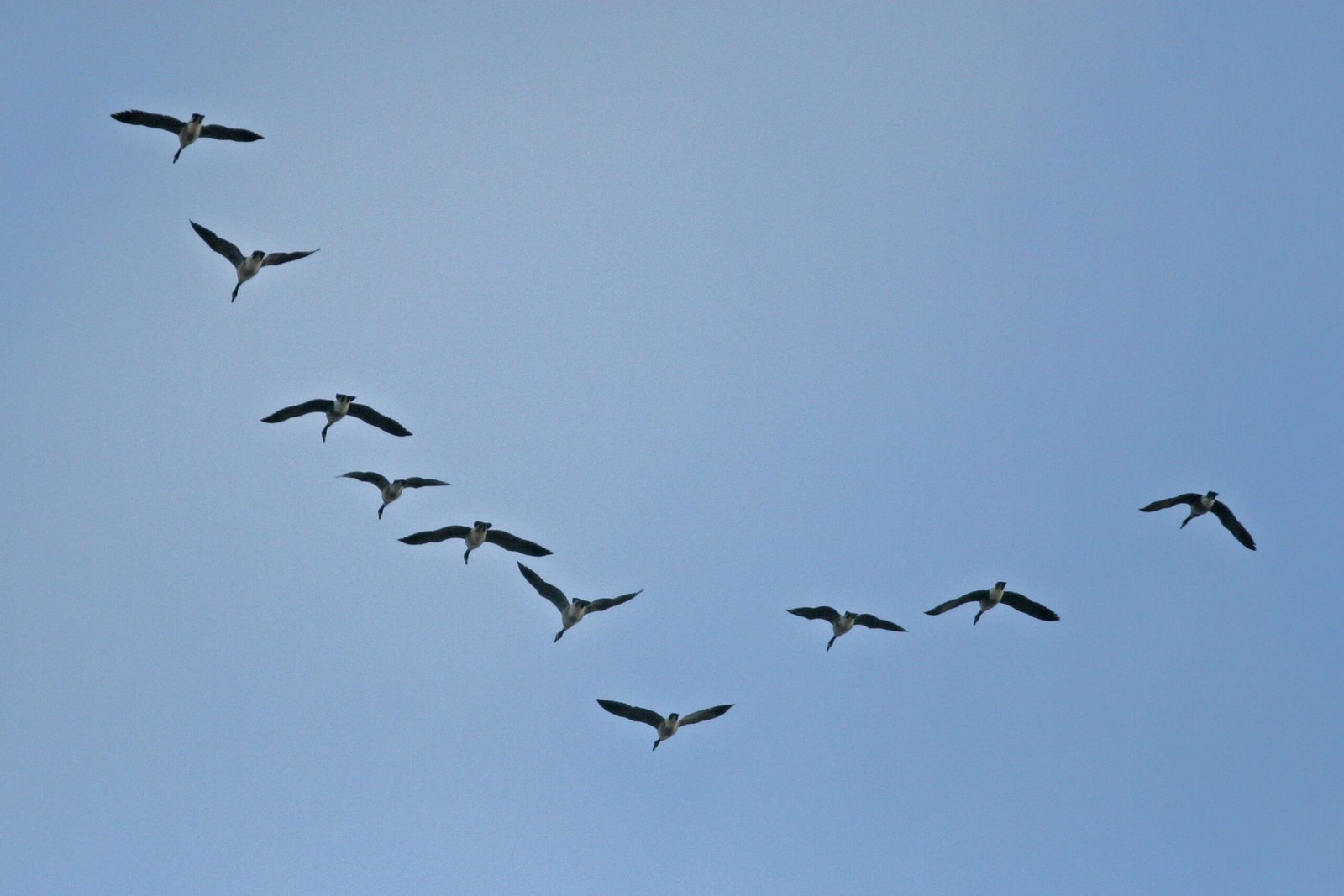
While geese are the poster-children for V-formation flying, they’re not alone. Pelicans, cranes, ducks, and even some species of storks have mastered this art. Each species adjusts its V’s width and angle based on size, wing shape, and flight speed. For example, pelicans, with their broad wings, form more open V’s, while geese fly in tighter groups. These patterns aren’t random; they’re perfectly suited to each species’ unique flight style and migration needs. It’s a bit like customizing a bicycle for your own body size and riding habits.
How Scientists Learned from the Skies
Curiosity about V-formations isn’t new. Ornithologists have studied birds’ flight patterns for decades, using everything from binoculars to radar to satellite tracking. The breakthrough came when researchers attached lightweight GPS trackers and heart rate monitors to birds, revealing the precise positions and energy savings in action. High-speed cameras and drones have even captured the subtle wingtip movements that trigger the upwash effect. Each new technology peels back another layer of mystery, revealing just how sophisticated these natural flyers really are.
From Bird Wings to Airplane Wings
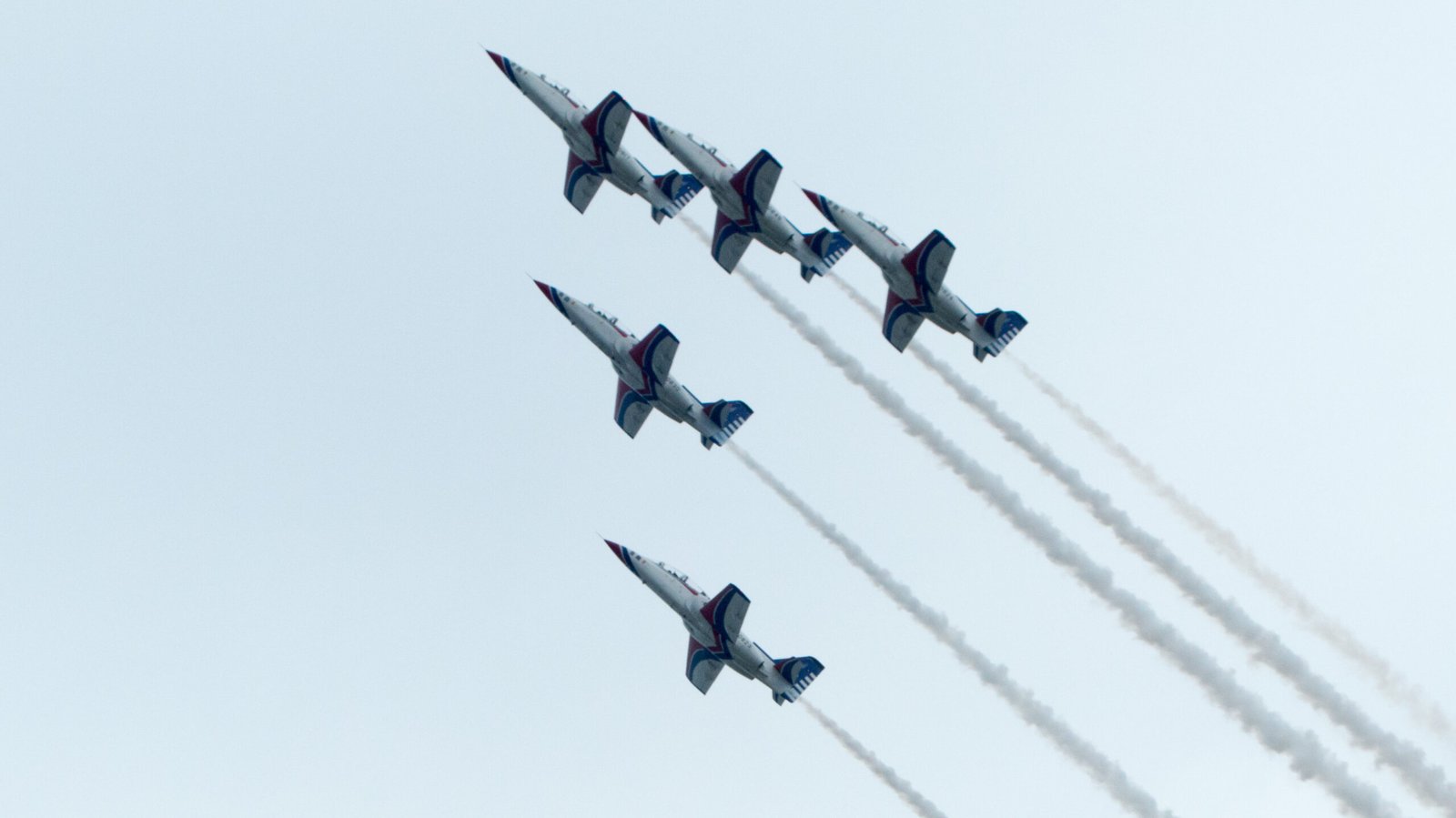
When the Wright brothers took to the skies in 1903, they already knew that birds held important clues to mastering flight. Over the decades, engineers have studied V-formation flying to improve aircraft efficiency. Today, the principles of upwash and downwash influence everything from wingtip design to flight strategies in military and commercial aviation. By mimicking the bird’s V, planes can reduce drag, save fuel, and fly longer distances—proof that sometimes, nature really does know best.
Military Aircraft and V-Formation Tactics
Military pilots have long flown in V-shaped formations, also known as echelon or delta formations. This isn’t just for show—it’s a highly effective tactic borrowed from birds. The V-formation allows pilots to maintain visual contact, coordinate maneuvers, and reduce turbulence from the lead aircraft. In aerial refueling and long-distance missions, the formation helps conserve fuel and maintain group cohesion. It’s a stunning example of nature’s wisdom guiding human innovation, especially in high-stakes environments.
Commercial Aviation and Fuel Efficiency
The dream of flying airliners in V-formations isn’t just science fiction. Recent experiments have shown that planes flying in the right position can save significant amounts of fuel—sometimes up to 10% per flight. European and American airlines have tested coordinated flights where one plane “drafts” behind another, much like birds do. While there are still technical and safety challenges, the potential for greener, cheaper air travel is tantalizing. The sky, as they say, is the limit.
Wingtip Devices: Inspired by Birds
Look closely at modern airplanes, and you’ll notice little upturned fins at the ends of their wings. These are called winglets, and they owe their existence to the same aerodynamic principles that make the V-formation work. Winglets help manage the swirl of air at the wingtips, cutting drag and saving fuel. Engineers studied how birds’ wings naturally minimize turbulence, then applied those insights to aircraft design. The result? Quieter flights, lower emissions, and billions saved in fuel costs every year.
Robotics and Drone Swarms
The lessons of the V-formation aren’t limited to big metal birds. Engineers designing drone swarms are taking cues from migratory birds to coordinate fleets of small aircraft. By flying in formation, drones can extend their battery life, share navigation tasks, and avoid collisions. Some experimental drones even shift positions mid-flight, just like geese rotating leaders. The future of robotics may very well be shaped by the wisdom of wild geese.
Formation Flying in Sports and Recreation

It’s not just birds and pilots who love the V. Skydivers, paragliders, and even cyclists have borrowed the idea. Formation skydiving teams arrange themselves in V-patterns during freefall for maximum control and visual impact. Cyclists drafting behind a leader use less energy—a concept straight from the bird playbook. The V-formation has become a symbol of teamwork, efficiency, and the thrill of moving as one.
V-Formation and Communication
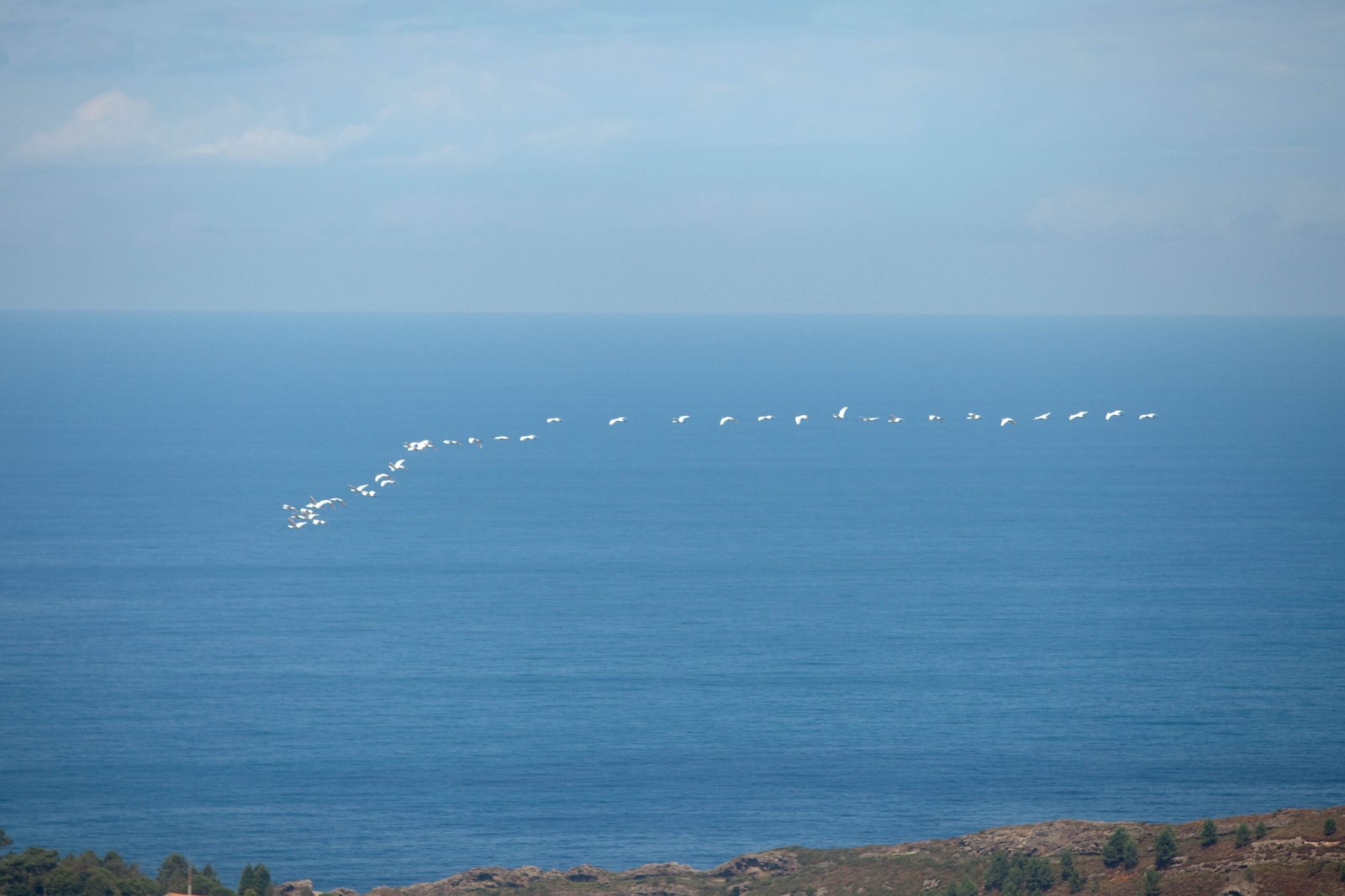
Flying in a V isn’t just about physics; it’s about communication. Birds constantly adjust their positions with subtle wing flicks and calls, keeping the group in sync. Scientists have observed that geese honk more frequently when flying at the front, perhaps to encourage those behind or signal a leader change. This constant chatter keeps the flock coordinated, preventing collisions and confusion. It’s a reminder that no great journey is made alone.
The Mathematics Behind the V

You might think the V-formation is chosen at random, but there’s solid math behind it. Researchers have modeled the optimal angle and spacing to maximize energy savings, finding that the classic “V” shape—about 120 degrees—offers the perfect balance. Birds naturally find this angle, even though they don’t use calculators or GPS. It’s a beautiful example of instinct meeting geometry, with each member perfectly placed for the benefit of all.
The Role of Leadership and Rotation
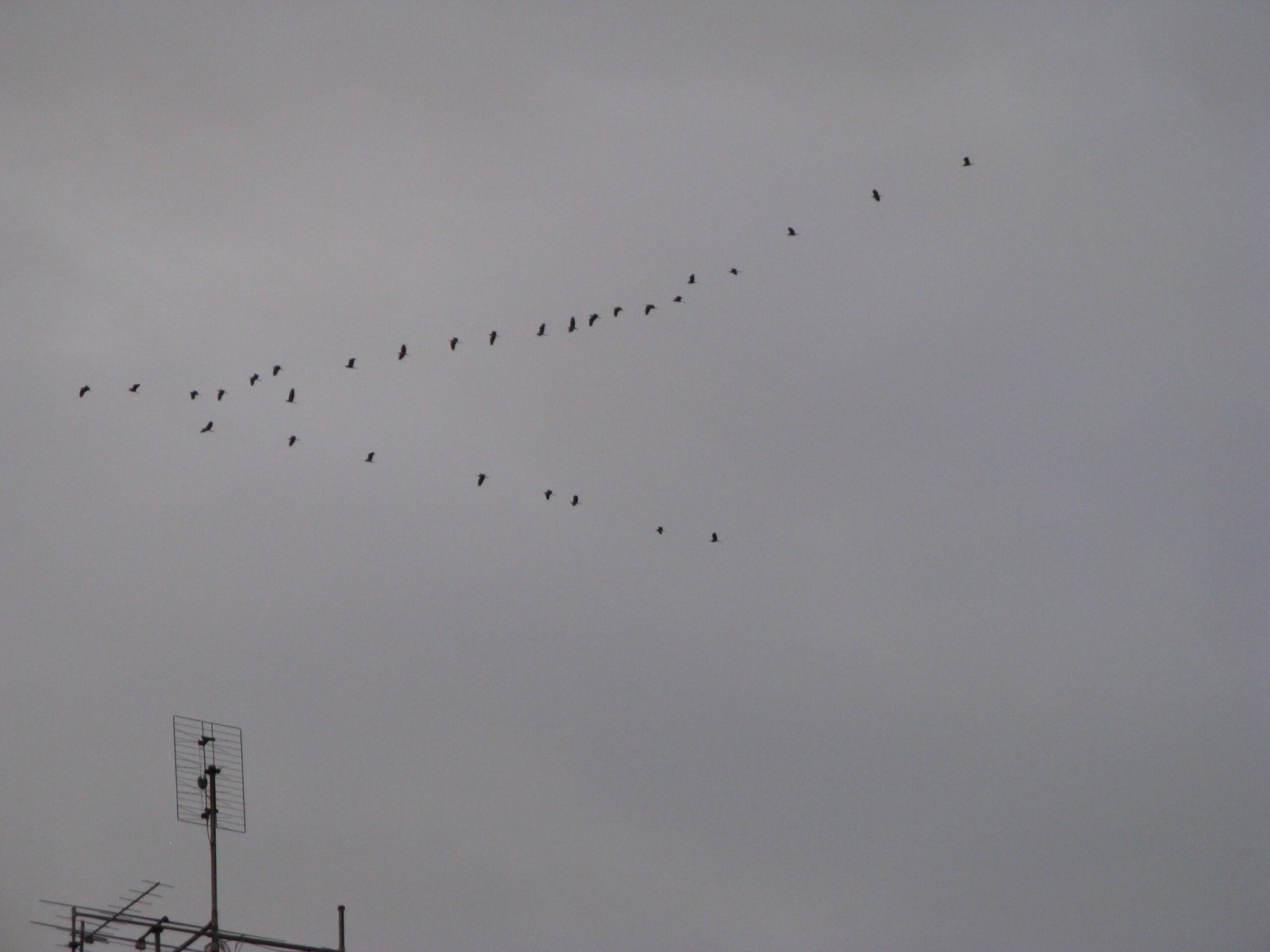
In every V-formation, leadership is both a privilege and a burden. The lead bird breaks the wind and faces the toughest flight. But unlike some human organizations, the leader doesn’t stay at the front for long. Birds rotate the lead, sharing the hardest work and ensuring no one gets too exhausted. This rotating leadership keeps the flock strong and reminds us of the power of shared responsibility—a lesson humans could take to heart more often.
V-Formation in Extreme Conditions
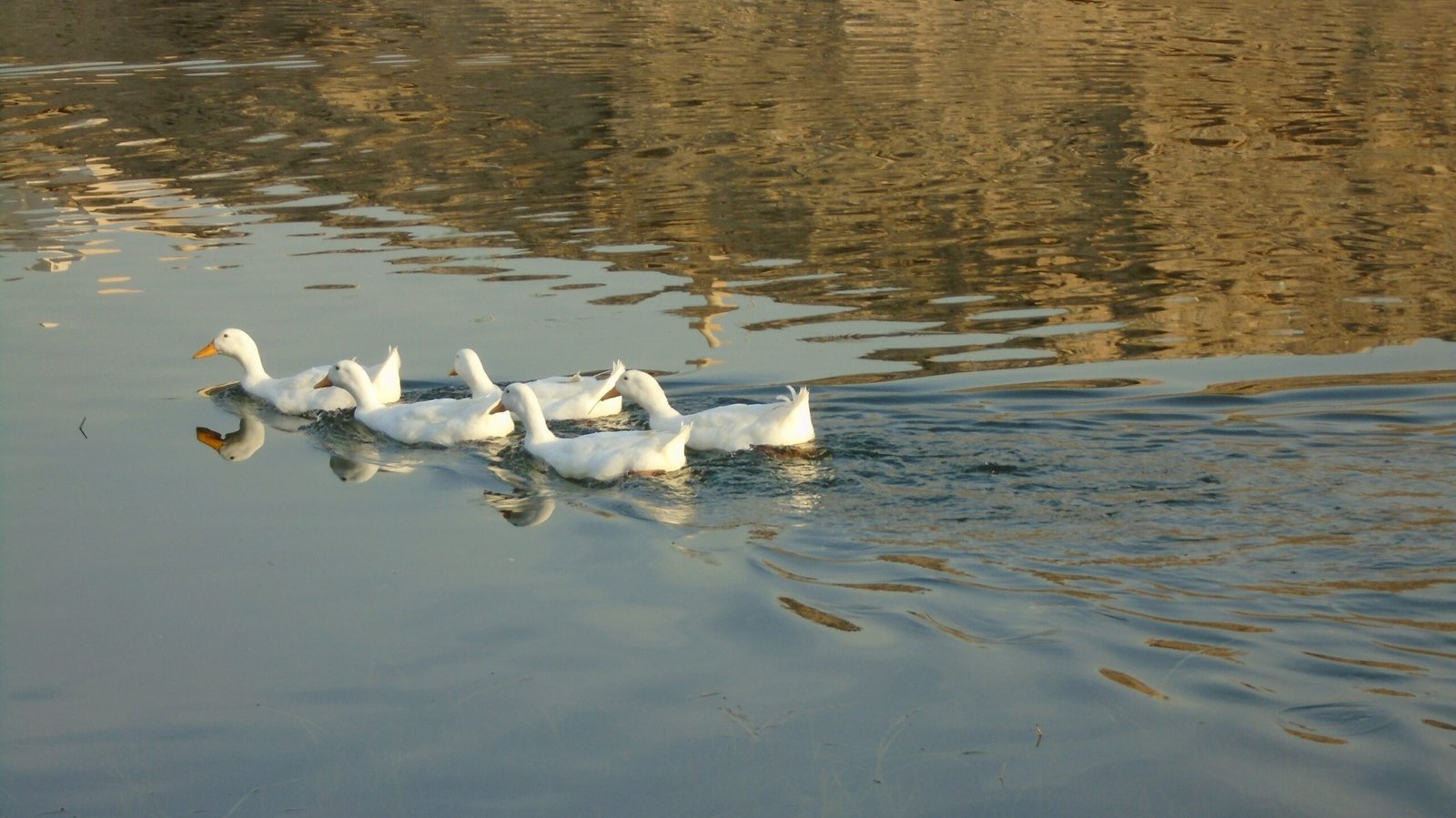
Migrating birds face brutal headwinds, freezing temperatures, and thousands of miles of open sky. The V-formation is their secret weapon against these challenges. By flying together, they can push through storms, avoid predators, and conserve precious energy. Some species, like the bar-headed goose, even cross the Himalayas—one of Earth’s harshest environments—using this strategy. It’s an inspiring display of resilience, adaptability, and collective strength.
The Evolutionary Journey to Perfection
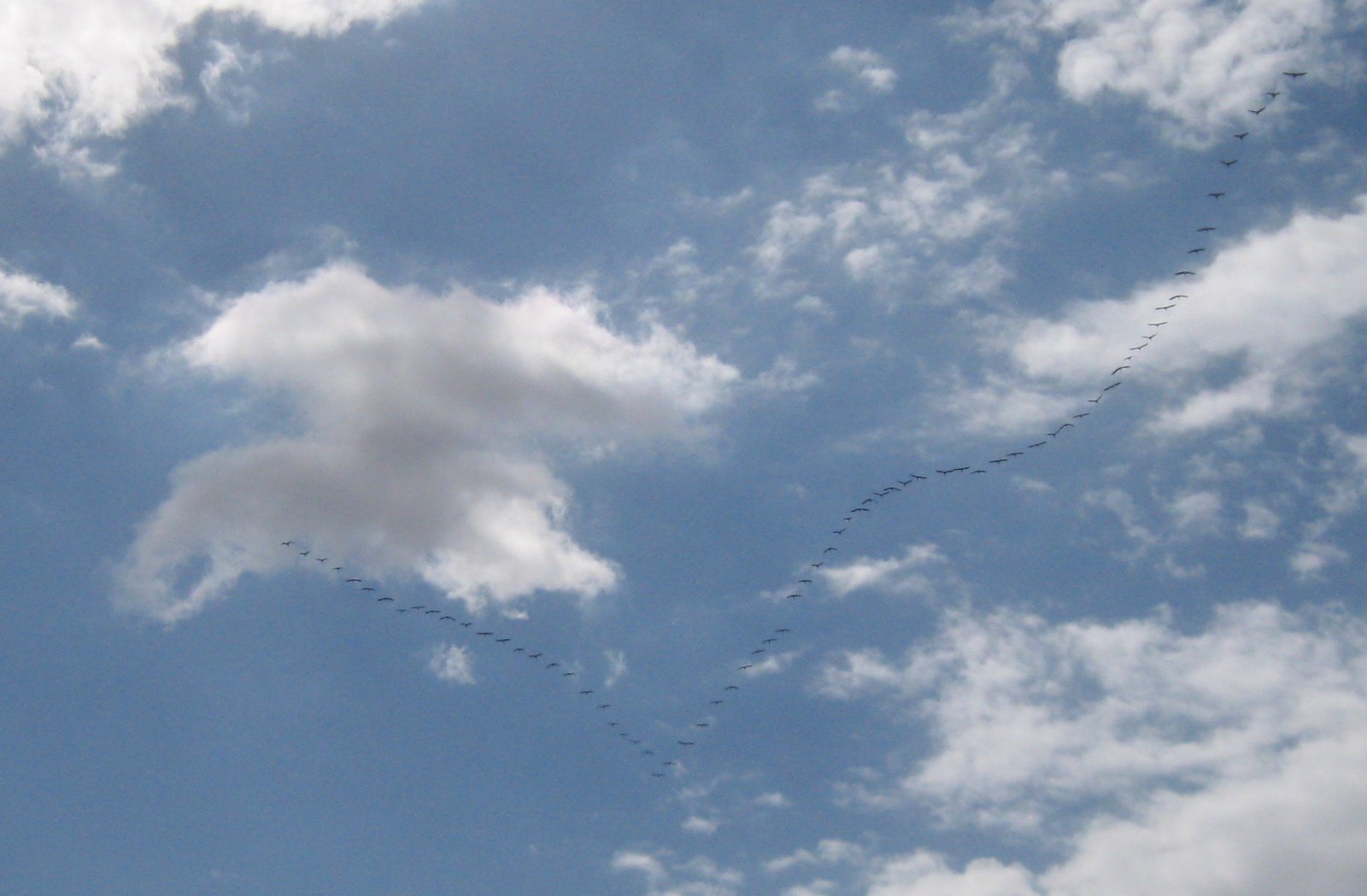
The V-formation didn’t appear overnight. Over millions of years, birds evolved this pattern through natural selection. Those that flew together survived longer, migrated farther, and passed on their genes. It’s a story of trial and error, of countless flocks testing the skies until the most efficient formation was found. Today, the V is a living fossil of evolution’s relentless drive for efficiency and survival.
Challenges and Limitations of Formation Flight
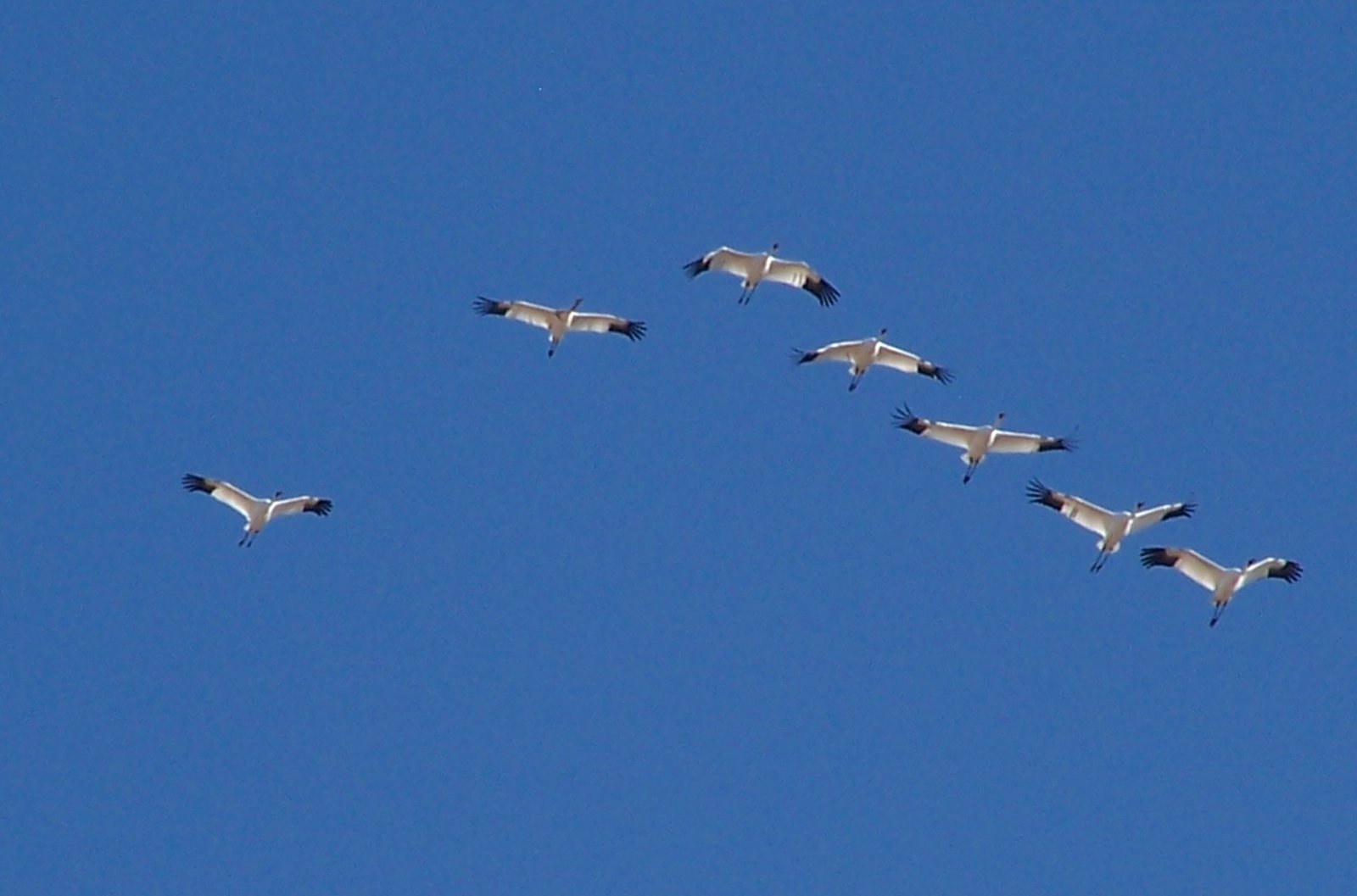
Not every flight is perfect, and not every bird or plane can fly in a V. Turbulence, changing weather, and individual differences can break up the pattern. For airplanes, coordinating V-formations requires careful planning and communication—technology that’s still catching up to what birds do naturally. And while the V-formation is powerful, it isn’t always the best choice for every situation. Sometimes, the smartest move is to break formation and go it alone.
Lessons for Sustainability and Future Flight
As the world looks for greener ways to travel, the V-formation offers hope and inspiration. By learning from birds, engineers are designing smarter planes, cleaner engines, and more efficient flight routes. The dream of carbon-neutral aviation might just take wing, thanks to a flock of geese flying overhead. It’s proof that sometimes, the solutions to our biggest problems are already soaring above us.
Human Fascination with the Flight of Birds
There’s something deeply moving about watching a flock in perfect formation. It stirs our imagination, connects us to the wild, and reminds us of our own longing to fly. From cave paintings to children’s stories, the V-formation has inspired art, literature, and dreams of flight. It’s a symbol not just of science, but of hope, unity, and the thrill of exploration.
What the V-Formation Teaches Us About Ourselves
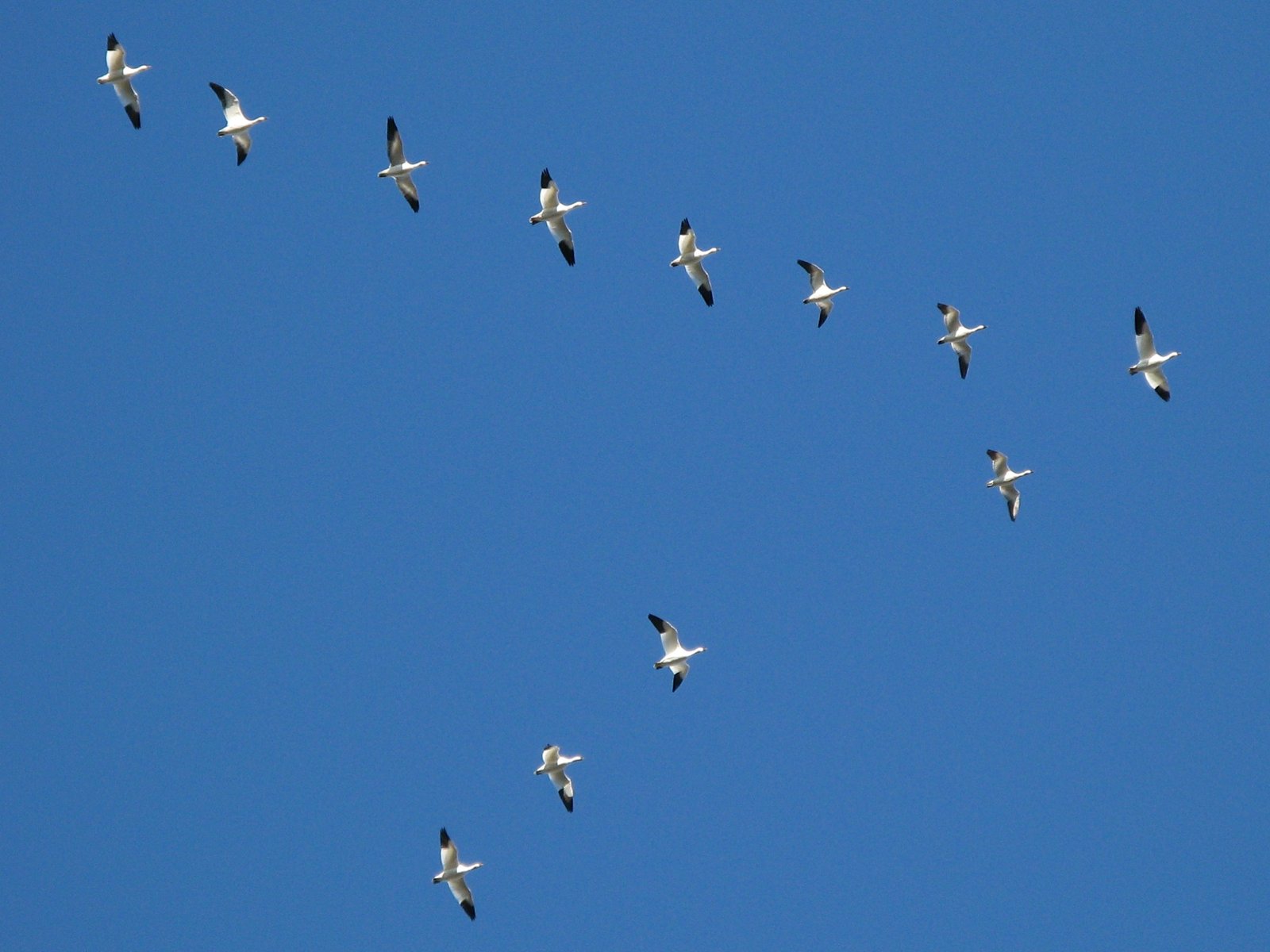
In the end, the story of the V-formation is about more than wings and wind—it’s about cooperation, innovation, and the endless quest to push beyond limits. Birds in flight show us that by working together and learning from nature, we can achieve what once seemed impossible. Isn’t it remarkable how much we can learn just by looking up?



